DAYTON, OH — Decades of struggle to save and restore a Southwest Ohio landmark – once listed for sale on eBay – are nearly over. It happened thanks in part to some Cincinnati-area companies and lessons learned from development here.
"It's probably in the top two of the toughest projects I've done in 43 years" said George Keppler, vice president of construction for Over-the-Rhine-based Model Group – and a UC grad. "This is one of the keystones to get revitalization Downtown."
Part of the historic Dayton Arcade is now an innovation hub connecting university students to businesses. Apartments come online soon. The iconic rotunda will be an event space. Businesses are getting ready to move into storefronts on the ground floor.
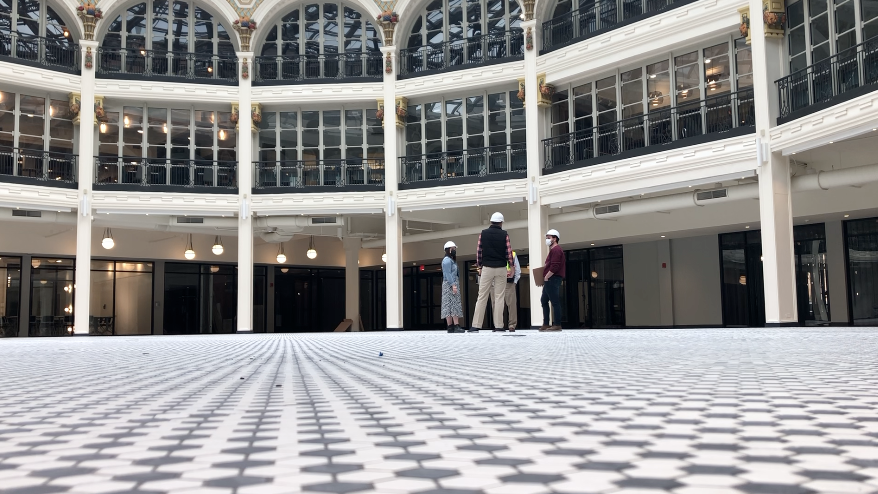
Think of the Dayton Arcade like a mix of Findlay Market and Union Terminal – a complex of buildings with rich history and serious emotional pull that was seriously close to being lost to the wrecking ball.
"We call this the most emotional building in Dayton, Ohio," said David Williams, senior director of development for Baltimore-based Cross Street Partners. "This one always has a story."

Rise – and fall
The Arcade, built between 1902 and 1904, was a hub of activity in downtown Dayton for decades. It is really a collection of several buildings, featuring Dutch and Italian Renaissance Revival architecture. The rotunda was a fresh market for decades, with innovative (for its time) cold storage. Restaurants like Charley's Crab and Arcade Seafood opened around the rotunda.
"I compare it to Findlay Market," Keppler said. "It's the same thing with the farmers market to start with, same concepts. Everybody cherishes Findlay Market in Cincinnati and it's the same thing here. Every time we ran into someone in Dayton, they talked about it."
It was added to the National Register of Historic Places in 1975. A renovation turned into an urban mall in the 1980s, just as suburban malls were drawing business away.
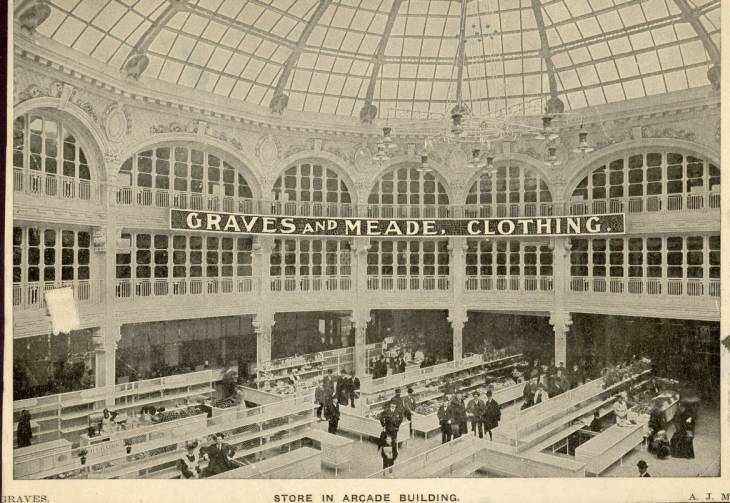
That was the first time Williams set foot inside – for lunch in the food court, which was in the basement of the rotunda at the time.
In the '90s, the Arcade opened only for holiday shopping. The rotunda was decked out for the Arcade Holly Days for a couple years. But it wasn't enough to save the businesses or commitment to the building itself.
The Dayton Arcade has spent the last 30 years empty and rotting, the Christmas lights still dangling from the rotunda dome.
A 'complex' fix – and surprising discovery
The property shuffled through owners – at one point, it was listed for sale on eBay, likely to be demolished for scrap.
"When your buildings are for sale on eBay, when your best-looking buildings are for sale on eBay, that's a problem," said Frances Kern Mennone, director of strategic partnerships for Cross Street Partners.
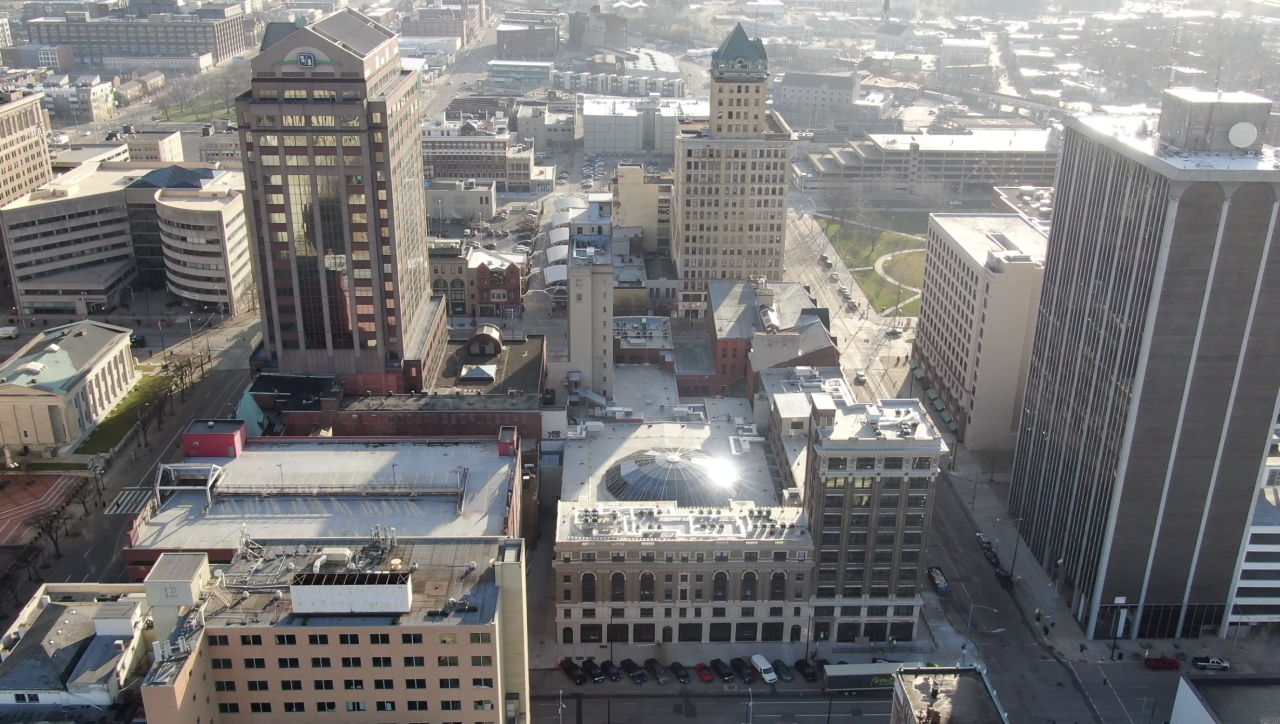
Ultimately, a task force compared the cost of demolition (and loss of tax credits) to the cost of redevelopment.
"So it was no longer a $12 million conversation; now it was a $40 million conversation," Williams said.
That change in thought process won city support to stabilize it and start work on restoration. But first, financing.
Frances Kern Mennone often spent the entire hour-long drive from her home in Wyoming, Ohio, to downtown Dayton on her phone, finessing the finances to make this renovation happen.
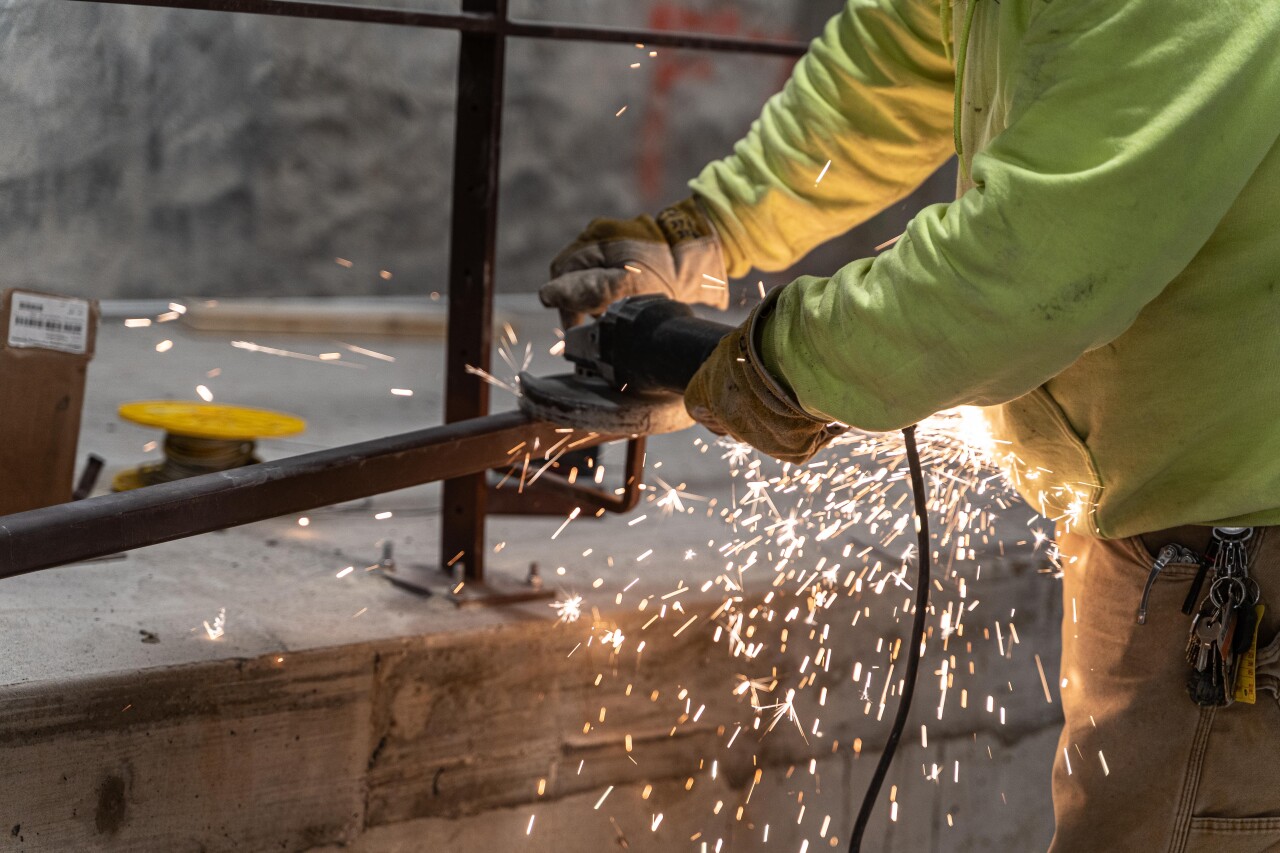
"It's the most complicated project I've ever worked on, for sure," she said. "We had gotten all the financing pieces put together about nine months before we were able to close the transaction."
The project's capital stack is a complex mix of layers of federal and state historic tax credits, new market tax credits, low-income housing tax credits, as well as loans and grants. The project is expected to cost roughly $95 million.
Bruce Katz, director of the Nowak Metro Finance Lab at Drexel University, called the Dayton Arcade "the most transformative project in America" in 2019, saying he counted 26 layers of financing in the capital stack.
Work inside started in 2019, too, after the financing was figured out – bringing more Cincinnati-area experts to the project.
"We joke that if you were at UC in structural engineering and wanted to do your thesis, this is the place," said alumnus George Keppler. "The structures were phenomenal – you're talking 1902, 1904, and some of the things they did back then, I just shake my head and say, 'Wow.'"
Recent UC architecture graduate Michael Rick has been working at the Arcade since shortly after he graduated, designing elements for the refreshed facades and railings throughout.
"I did a lot of drawings, but this is really the first time I've been able to kind of see my drawings come to life," he said.
OTR-based Model Group joined Cross Street Partners and McCormack Baron Salazar as leads on the project.
"Every time we took a wall down, every time we opened up something, it was a problem," Keppler said.
Except one time, it was a serendipitous discovery.

"One of the other contractors mentioned to me that they had found intact, sort of, offices in the North Arcade and I instantly told him to take me to it," said Boyd Williams, plumbing superintendent with Nelson Stark Company. Williams is from Woodsdale, which is a tiny town just south of Trenton.
Williams' dad and stepfather both did plumbing for about 18 months at the Arcade in the late 1980s.
"We were ankle-deep in water with flashlights, because it's pitch black, and we go into a room with a desk with the legs rotting off, and there's a pile of time books on top of the desk that hadn't slid into the water yet," he said. "The first one I grab, open it up and I see my [now] father-in-law's name and my father's name in the sheets."
Williams saved those time books, which range over several months in late 1989. His now father-in-law's distinct handwriting is on the front of one.
"That's how the whole Arcade was when we first went in there," Williams said. "It looked like everybody went home for the day and never came back."
Back to life
There's been no shortage of passion and vision for the Arcade.

"Why is Cincinnati downtown, why is Over-the-Rhine, so special? Because it's just taking advantage of all that great fabric throughout the area," Williams said. "That's what we're capitalizing on here."
The complex's physical scale is massive. Nine inter-connected buildings comprise the complex, totaling more than 330,000 square feet.
Cincinnati-based De Timmerman Ltd, experts in historic window restoration, has restored roughly 800 windows throughout the complex, according to Model Group.
West Chester-based Kleingers Group provided civil engineering, survey, and landscape architecture services.
The rotunda, with its distinct glass dome, has been fully restored. The dome window panes were replaced, new terrazzo tile floor was made custom, and cornucopia ornamentation has been repainted around the ceiling.

"Everything represents Ohio [agriculture]," Keppler said. "What I was told is, because it was so close to the rail system, they had stuff shipped in from California and folks from Indianapolis were coming here back then."
The Hub – a partnership between the University of Dayton and The Entrepreneurs' Center – is a 100,000-square-foot co-working space inside the old McCrory's five-and-dime building, overlooking the rotunda. It will eventually bring 200-300 students to the Arcade each day, according to Williams.
"It will be lots of activity," Williams said. "But when you're doing that, creating businesses, you also have to find money."
The developers covered the lowest part of the rotunda, which was once the food court, and created The Tank. It is a theater-in-the-round space that can be used to pitch investors on projects, for performances, and more.
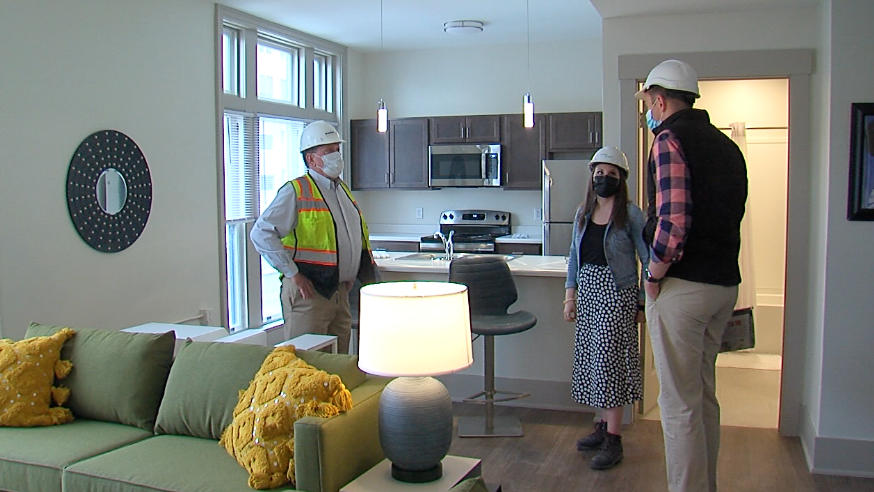
There are 126 apartments getting finishing touches now. The Art Lofts at the Arcade mix market-rate and low-income housing, with a focus on working artists who can use some of the gallery, studio, and makerspaces in the complex.
Crafted and Cured, a local favorite specializing in craft beers and cured meats, will be the first commercial tenant on the ground floor facing Fourth Street.
"It used to be a mixed-use development; it is a mixed-use development. First-floor vibrancy is key," Williams said.
Work continues
Phase 2 of the project will start as this phase ends – the North Arcade.

It features an iconic Dutch facade on Third Street and the long, classic "arcade"-style corridor. This will soon house a kitchen incubator and fresh food market (think: Findlay Kitchen in Over-the-Rhine), more retail space, more event space, and a hotel or additional housing on the upper floors.
"It's in dire need of getting refurbished, but we're ready to attack that," Keppler said.
"At the end of the day, what's your value proposition?" Williams asked. "What makes Dayton different from Cincinnati? What makes Cincinnati different from Northern Kentucky? A lot of it's that history and, without taking advantage of that, then you're just like everybody else."
Frances Kern Mennone compared the project – and its importance – to saving Union Terminal from the wrecking ball in the 1980s.
"If communities start denuding themselves of all their cool, unique structural assets, then there's nothing that separates them [from other cities]," she said.
There's been no shortage of enthusiasm for saving the Dayton Arcade.
"Folks were lined up around the block just to get a look at it," Keppler said of one early tour.
Thanks to some additional help, expertise, and passion from Cincinnati, they will soon be able to make new memories inside.





